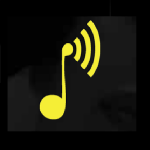AudioTool
Description
AudioTool – SPL (deciBel) Meter featuring RT60, Leq, Spectrum Analyzer, Spectrogram, Chart Recorder, Signal Generator, Polarity Checker. Two methods of Mic calibration are offered.
Recommended by “Sound and Vision” magazine.
Recommended by “Sound and Vision” magazine.
Features 1/1, 1/3 & 1/6 octave RTA modes, Leq (wideband, Octave, variable duration), RT60 (wideband, Octave), Spectrogram, Peak frequency, Fast, Medium & Slow filters, Flat & A/C Weighting and film industry X Curve, Averaging, SPL Chart Recorder, Noise Criteria, White/Pink Noise, Sine, Square, Triangle, Sweep, Ramp and Impulse signals & loudspeaker polarity checker, L/R select. RTA Store & Load, Hann windows, “Keep Screen On”, pinch to zoom, scroll to center.
Exclusive ISO 1/3 Octave Calibration – correct for your phone’s microphone response. Octave calibration discs are moved up or down to obtain a flat response, and match the overall SPL to that of an external meter. Save/Restore of Cal files (Dayton Audio iMM-6 also supported).
Use: home theater, audio engineer, car audio, etc
AudioTool FFTs sets of samples recorded at the microphone. Aliasing reduced by Hann windowing. SPL calculated in realtime. Spectra may be saved as files on the SD card, then loaded and displayed with the live spectrum. The “Store” button stores the current live spectrum – “Load” shows a list of stored spectra to select.
To hide the buttons, tap the screen. To restore them, tap again. To zoom the scale, pinch the screen. To move the scale, drag it up or down (left or right).
The deciBel meter uses IIR filters and exponential averaging to calculate Flat, A and C weighted response at speeds of Fast, Medium and Slow speeds.
A pair of cursors can be shown on the RTA and Chart Recorder displays: each can be moved to any position, and will display the SPL & time/frequency values there. Initially, both cursors are positioned mid-screen – simply drag them to a new position with the fingertip. The cursors can be turned on and off in the Menu.
The loudspeaker polarity checker can be used to check whether a loudspeaker is wired in phase: connect the AudioTool output to the speaker under test, select “Polarity” from the signal generator screen, then return to the RTA screen. If the speaker is out of phase (polarity reversed) AudioTool will show “Pol —“, otherwise “Pol +++” if the speaker is in phase.
The Noise Criteria (available from the Menu) function shows a set of NC contours overlaid on the 1/1 Octave RTA display and the calculated real time current NC value is also shown.
The Chart Recorder shows a moving trace of the SPL measurements over the last few minutes.
RT60 measurements can be made by starting the RT60 component using the “RT60” button, and then using a loud clap (or similar) to trigger the measurement. RT60 can also be used with Pink Noise from the AudioTool generator. RT60 times measure how much reverberation or echo there is in a room or auditorium.
The Signal Generator generates White and Pink Noise, Sine, Square, Triangle and Ramp waves, Sine Wave Sweeps and Impulses. The generator uses multiple cycled buffers, refreshed randomly so ensuring truly random White/Pink noise. Pink Noise algorithm uses Kemmet’s method to adjust White into Pink.
The frequency accuracy of the generated periodic signals is typically around 1%. Sine wave fidelity is good throughout most of the audio range. Other signals’ leading and trailing edges show ringing and decreasing frequency response artifacts in the upper ranges, depending on the Android used.
Screenshots
[appbox googleplay com.julian.apps.AudioTool]
Download Links
What's new
Version 8.6 introduces a new method for importing Cal files (from e.g. Dayton Audio iMM6 microphones) into AudioTool. See online manual for instructions.





